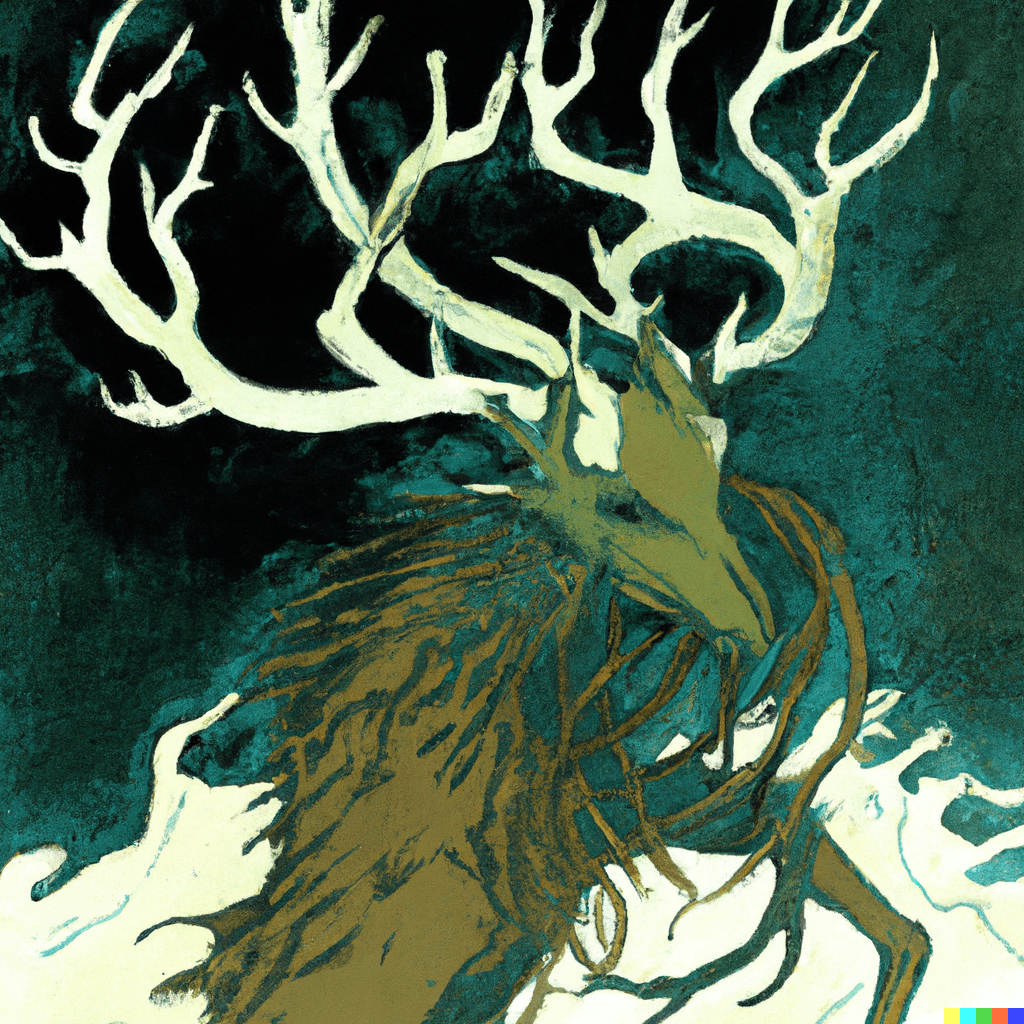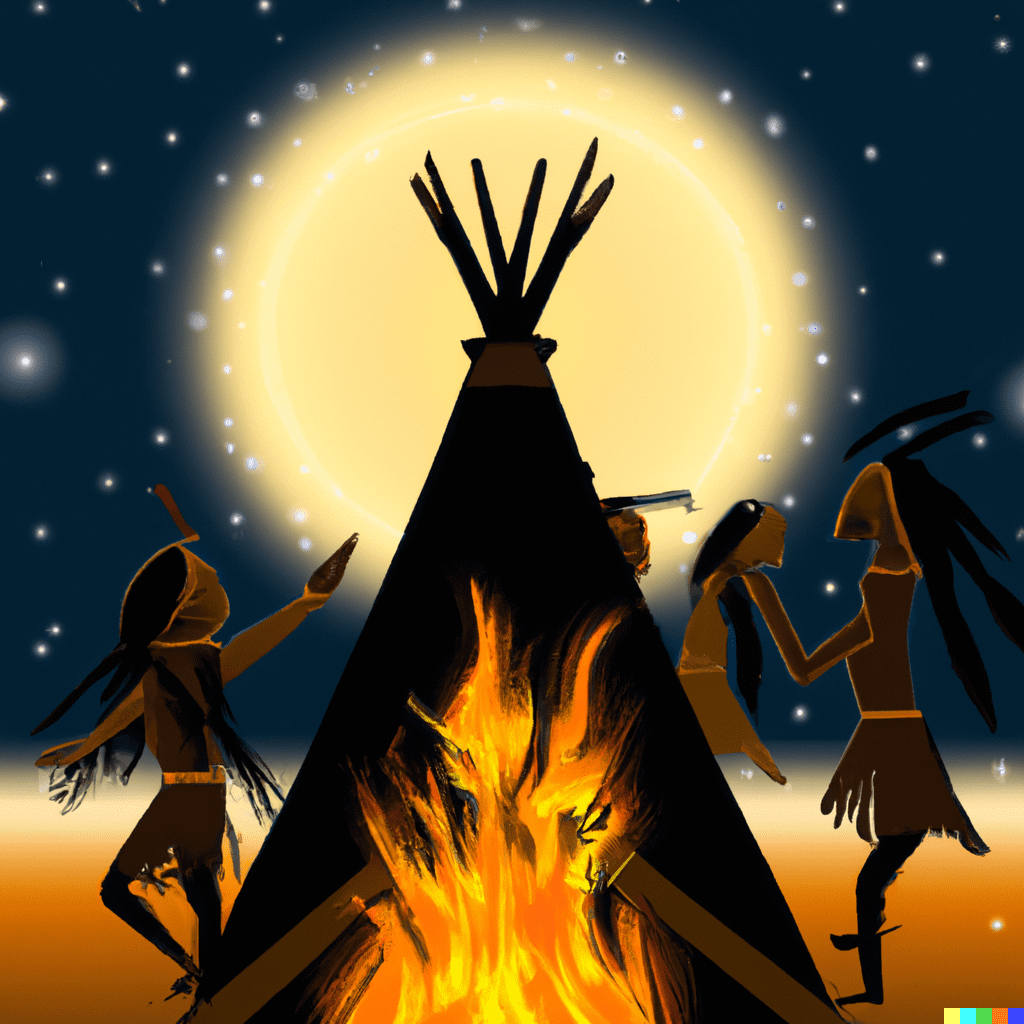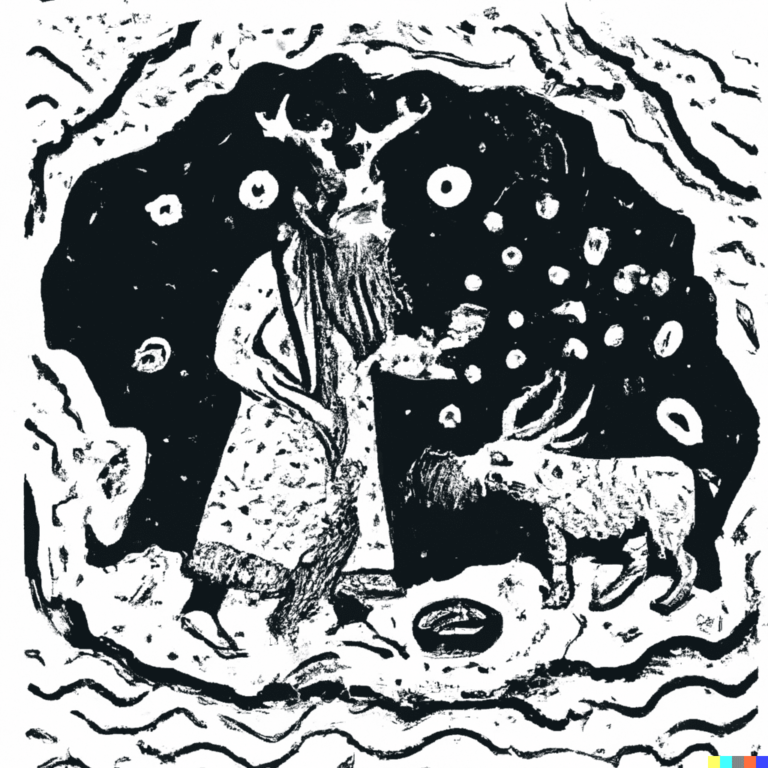The Legend of the Wendigo
The Wendigo is a legendary creature from the folklore of the Algonquian-speaking tribes of North America. According to the legend, the Wendigo is a malevolent, supernatural being that roams the forests and preys on humans.
The story of the Wendigo varies among different tribes, but most versions describe it as a giant, emaciated creature with glowing eyes, matted hair, and long, sharp claws. It is said to have a heart of ice and an insatiable hunger for human flesh.
In some versions of the legend, the Wendigo is said to be a human who has been possessed by a spirit or cursed by a shaman. Other versions describe it as a spirit that inhabits the body of a human, transforming them into a monster.
The Wendigo is often associated with cannibalism, as it is said to feed on the flesh of humans. According to the legend, those who consume human flesh can become possessed by the Wendigo and transform into one themselves.
The legend of the Wendigo has been used to explain various phenomena, including the disappearance of hunters and travelers in the woods, as well as cases of cannibalism among Native American tribes. The legend continues to be passed down through generations and remains a prominent part of Native American folklore today.
Why Did the Algonquins Believe in the Wendigo?

The belief in the Wendigo among the Algonquian-speaking tribes was likely rooted in their cultural and religious traditions.
The Wendigo legend served as a cautionary tale, warning people of the dangers of greed, gluttony, and selfishness. According to the legend, those who give in to their desires and consume human flesh may become possessed by the Wendigo and transform into a monster, bringing harm and death to others.
The Algonquins believed in the existence of spirits and supernatural beings that could influence the natural world and the lives of humans. They also believed in the concept of balance and harmony between humans and nature, and that violating this balance could lead to dire consequences.
The Wendigo legend may have also been influenced by the harsh living conditions in the northern regions where the Algonquins lived. The long, cold winters and scarcity of food may have led to fears of starvation and cannibalism, which were reflected in the story of the Wendigo.
Overall, the belief in the Wendigo among the Algonquins was likely a way of understanding and coping with the challenges of their environment and promoting social and moral values within their community.

Is the Wendigo Real?

There is no scientific evidence to suggest that the Wendigo, as described in legend, is a real creature. It is widely considered to be a mythological or folkloric entity.
However, it is worth noting that some cultures and belief systems hold that certain entities, such as spirits or other supernatural beings, exist beyond what can be explained by scientific methods. In these belief systems, the existence of such beings is accepted on faith, rather than empirical evidence.
From a scientific standpoint, there are no known animals or creatures that match the description of the Wendigo, and the concept of a humanoid creature with a heart of ice and an insatiable hunger for human flesh is not consistent with the laws of biology or physics.
Therefore, it is highly unlikely that the Wendigo, as described in legend, is a real creature that exists in the natural world. It is more likely a product of cultural imagination and storytelling.
In addition to the Algonquian tribes, other indigenous groups in North America have their own versions of similar supernatural entities. For example, the Iroquois people have a legend about a similar creature called the Stone Giant or Ot-ne-yar-heh, which is said to have the ability to change its size and shape to trick or harm humans.
The Wendigo legend has also gained wider recognition beyond indigenous communities and has been popularized in contemporary culture, including in horror movies, video games, and other forms of entertainment. However, it is important to note that the cultural significance and spiritual meaning of the Wendigo may vary among different communities, and it should be respected as a part of indigenous folklore and heritage.
Wendigo Sightings
There are no verifiable scientific reports of its existence. However, there have been numerous reported sightings and encounters attributed to the Wendigo, primarily concentrated in areas with strong Algonquian cultural presence. These reports are typically passed down through storytelling and legend, often blurring the lines between factual accounts and embellished narratives.
Here’s what we know about reported Wendigo sightings:
Nature of Reports:
- Descriptions vary considerably, often depicting tall, emaciated figures with gaunt features, pale skin, and glowing eyes.
- Reports often emphasize the creature’s immense size, strength, and predatory nature, linking it to disappearances and misfortune.
- Many narratives highlight the chilling effect of the Wendigo’s presence, including an unnatural cold and feelings of dread or despair.
Cultural Significance:
- The Wendigo serves as a cautionary tale within Algonquian communities, warning against greed, selfishness, and moral transgressions.
- Cultural interpretations and beliefs surrounding the Wendigo can influence how individuals perceive and interpret sightings or unusual experiences.
Scientific Skepticism:
- From a scientific standpoint, the reported sightings lack physical evidence and often defy known biological principles.
- Psychological explanations suggest these experiences could be attributed to cultural conditioning, sleep paralysis, or misinterpretations of natural phenomena.
There are several other supernatural creatures from various cultures that share similarities with the Wendigo. Here are a few examples:
Skinwalkers: A legend from Navajo culture, skinwalkers are said to be shape-shifting witches who can take on the form of animals, including wolves and coyotes. They are known for their malevolent behavior and are believed to possess powerful supernatural abilities.
Yeti/Bigfoot: These are legendary creatures from different parts of the world, including the Himalayas and North America. They are said to be large, humanoid creatures that live in remote areas and are often associated with wilderness and mystery.
Chupacabra: The chupacabra is a legendary creature from Latin American folklore that is said to attack and suck the blood of livestock. It is described as a reptilian or canine-like creature with spines down its back and a pronounced jaw.
Krampus: A figure from Germanic folklore, Krampus is said to be a demonic creature who punishes children who misbehave during the Christmas season. He is often depicted as a horned, goat-like creature with a long, forked tongue.
These are just a few examples of supernatural creatures from different cultures that share similarities with the Wendigo. While each of these creatures has its own distinct folklore and mythology, they all tap into the primal human fear of the unknown and the mysterious.
Wendigo and Sleep

There is no specific connection between the Wendigo legend and sleep. However, sleep paralysis, a common sleep disorder, has been associated with experiences that resemble encounters with supernatural entities, including the Wendigo.
Sleep paralysis is a condition where a person is unable to move or speak while falling asleep or waking up. During sleep paralysis, some people report feeling a presence in the room or the sensation of being held down or attacked by a supernatural being. These experiences can be terrifying and are often associated with the feeling of being trapped in a nightmare.
In some cases, people who have experienced sleep paralysis have reported encountering a creature that resembles the Wendigo. It is worth noting, however, that these experiences are likely the result of the brain’s attempts to make sense of the feeling of being paralyzed and are not indicative of a real encounter with a supernatural being.
Overall, there is no direct connection between the Wendigo legend and sleep, but experiences associated with sleep paralysis may have contributed to the folklore surrounding the Wendigo and other supernatural entities.
Further Reading on the Wendigo
There are many books that explore the legend of the Wendigo and its significance in Native American folklore. Here are a few examples:
“The Wendigo” by Algernon Blackwood: This classic horror novella, first published in 1910, tells the story of a group of hunters who become stranded in the Canadian wilderness and encounter the malevolent spirit of the Wendigo.
“The Manitous: The Spiritual World of the Ojibway” by Basil Johnston: This non-fiction book explores the spiritual beliefs and mythology of the Ojibway people, including their legends of the Wendigo and other supernatural entities.
“Wendigo Tales: Book One” edited by Nathan Cabaniss: This collection of short stories, published in 2018, features a variety of modern authors exploring the legend of the Wendigo and its impact on contemporary horror fiction.
“The Wendigo Legend: Terror in the North Woods” by Nathan Carlson: This non-fiction book explores the historical and cultural context of the Wendigo legend and its continued significance in modern times.
“Wendigo: A Thriller” by Vaughn C. Hardacker: This modern thriller, published in 2019, tells the story of a group of hunters who become stranded in the Maine wilderness and must fight for their survival against a Wendigo.
“The Wendigo: Being a Terrifying Tale of Cannibalism in the Canadian Wilderness” by James B. Hendryx: This classic horror novel, first published in 1910, tells the story of a group of men who venture into the Canadian wilderness and fall victim to the malevolent spirit of the Wendigo.
“The Wendigo’s Child” by Robin Hardy: This modern horror novel, published in 2018, tells the story of a woman who returns to her hometown in northern Ontario and becomes embroiled in a terrifying mystery involving the Wendigo.
- “The Wendigo and Other Haunting Tales” by Algernon Blackwood: This collection of short stories, first published in 1907, features several tales of supernatural horror, including the classic story “The Wendigo.”
These are just a few examples of books about the Wendigo. There are many other works of fiction and non-fiction that explore this fascinating and terrifying legend.
Wendigo Movie
Here are some examples of movies featuring the Wendigo:
- Wendigo (2001): A psychological horror film exploring themes of isolation, mental illness, and the influence of local folklore.
- The Curse of the Wendigo (2009): A more traditional horror film following a group of friends investigating a series of mysterious deaths linked to the legend of the Wendigo.
- Antlers (2021): A dark fantasy film exploring a Native American boy with a mysterious connection to a dangerous entity resembling the Wendigo.
- Wind River (2017): A neo-Western crime thriller with elements of the Wendigo legend incorporated into the plot.



















